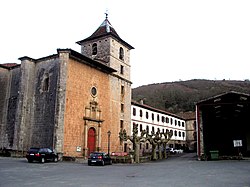
Antigua Guatemala, commonly referred to as just Antigua or la Antigua, is a city in the central highlands of Guatemala known for its preserved Spanish Baroque-influenced architecture as well as a number of ruins of colonial churches. It served as the capital of the Kingdom of Guatemala. It has been designated a UNESCO World Heritage site.

Auyán Tepui, also spelled Ayan, is a tepui in Bolívar state, Venezuela. It is the most visited and one of the largest tepuis in the Guiana Highlands, with a summit area of 666.9 km2 (257.5 sq mi) and an estimated slope area of 715 km2 (276 sq mi). The unevenly heart-shaped summit plateau of Auyán-tepui is heavily inclined, rising from around 1,600 metres (5,200 ft) in the northwest to a maximum of 2,450 m (8,040 ft) in the southeast. It is incised from the north by a vast valley, the Cañón del Diablo, formed by the Churún River. The larger western portion of the plateau is partially forested, whereas the eastern part comprises mostly bare rock with only patchy vegetation cover. The mountain hosts a number of extensive cave systems.

Llanes is a municipality of the province of Asturias, in northern Spain. Stretching for about 30 km along the coast at the extreme east of the province, Llanes is bounded to the south by the high ridge of the limestone Sierra del Cuera, which rises to over 1,100 m. The region is part of the Costa Verde of Spain, which is known for its spectacular coastal scenery, with 32 white sand beaches, and mountains covered with a deep green mantle. Llanes lies to the north of the Picos de Europa, a mountain range whose geology is almost entirely of limestone karst.

Tepoztlán is a town in the central Mexican state of Morelos. It is located at 18°59′07″N99°05′59″W in the heart of the Tepoztlán Valley. The town serves as the seat of government for the municipality of the same name. The town had a population of 14,130 inhabitants, while the municipality reported 41,629 inhabitants in the 2010 national census.
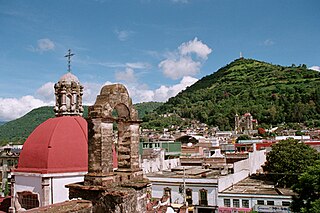
Tenancingo de Degollado is a large municipality, and also the name of a town and the municipal seat of the municipality, in the State of Mexico, Mexico. Both are commonly known as Tenancingo. The municipality is located in the south of the state, in the Tenancingo Valley, just outside the Toluca Valley. Tenancingo de Degollado is often confused with Tenancingo, Tlaxcala, which is a town in a different state.

Tejeda is a village and a municipality in the mountainous central part of the island of Gran Canaria in the province of Las Palmas in the Canary Islands.
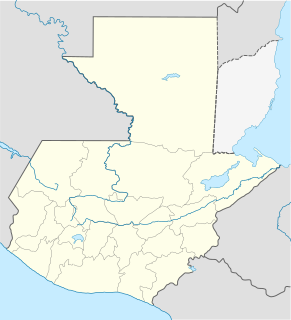
San Martín Jilotepeque is a town, with a population of 10,812, and a municipality in the Chimaltenango department of Guatemala. It was the site of a bus accident in 2013.

Cueva de las Manos is a cave and complex of rock art sites in the province of Santa Cruz, Argentina, 163 km (101 mi) south of the town of Perito Moreno. It is named for the hundreds of hand paintings stenciled into multiple collages on the rock walls. The art in the cave dates to between 11,000 to 7,000 BC, during the Archaic period of Pre-Columbian South America, or the late Pleistocene to early Holocene geological periods. Several waves of people occupied the cave over time as evidenced by some of the early artwork that has been radiocarbon dated to about 7300 BC. The age of the paintings was calculated from the remains of bone-made pipes used for spraying the paint on the wall of the cave to create the stenciled artwork of the hand collages. The site is considered by some scholars to be the best material evidence of South American early hunter-gatherer groups.
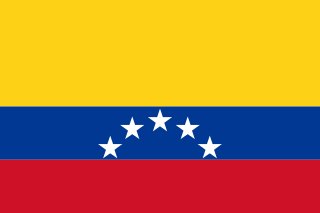
The Republic of Spanish Haiti, also called the Independent State of Spanish Haiti was the independent state that resulted from the defeat of Spanish colonialists from Santo Domingo on November 9, 1821, led by General José Núñez de Cáceres. The republic lasted only from December 1, 1821, to February 9, 1822, when it was annexed by the Republic of Haiti.

Baztan is a municipality from the Chartered Community of Navarre, northern Spain. It is located 58 km (36 mi) from Pamplona, the capital of Navarre. It is the largest municipality in Navarre, with around 376.8 km2 and just over 8,000 inhabitants.
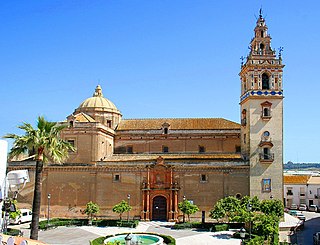
Moguer is a municipality and small city located in the province of Huelva, Andalusia, Spain. According to the 2018 census, it has a population of 21,699. Its surface area is 204 square kilometres (79 sq mi), and its population density is 106.36 per square kilometre (275.5/sq mi).
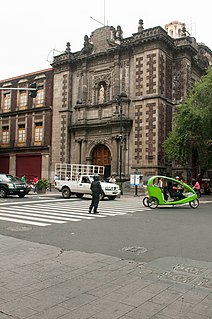
The Church of San Bernardo stands at the corner of Avenida 20 de Noviembre and Venustiano Carranza Street just south of the Zocalo or main plaza of Mexico City. It was part of a convent of the same name that was founded in 1636, but was closed along with all convents and monasteries during the La Reforma period in 1861. Currently, only the church remains of the convent complex.

Chalma is a small community, which is part of the municipality of Malinalco, Mexico State. Its small population is almost completely dedicated to the pilgrims who come to visit the Sanctuary of Chalma, the second most-important pilgrimage site in Mexico. The sanctuary is dedicated to an image of what many people describe as a "black Christ" on a cross that legend says miraculously appeared in an area cave where the worship of a deity commonly known as Oxtoteotl used to take place. Actually, Oxtoteotl is an aspect of Tezcatlipoca, the "Smoking Mirror," and the "black Christ" is really Tezcatlipoca, which the Spanish friars superimposed on the existing representation of Tezcatlipoca in order to convert the natives. Pilgrimages to this Christian sanctuary follow many of the patterns of the prehispanic rituals, including walking the narrow paths to the town itself, bathing in the waters of a special fresh-water spring and dancing at the sanctuary.
Poxte is a river and valley of the Maya Mountains in Guatemala. The valley is noted for numerous Maya sites such as Ixtutz and the Petén Caves. The river is located on the southwest of the Dolores plateau and northwest of Poptún, in the Guatemalan department of Petén. The source of the river is on the same plateau, near the villages of Boca del Monte and Santo Domingo. The river flows westwards through the hamlet of Poxte, it then disappears amongst the karst topography and resumes its course 7 kilometres (4.3 mi) to the west. It continues westwards into the San Juan River, which is a tributary of the Machaquila River. The Machaquila River feeds into the Pasión River, which flows into the Usumacinta River and into the Gulf of Mexico. The upper reaches of the Poxte River shares its drainage with the Mopan River, which flows eastwards into the Caribbean Sea.

Bendice La Corona Tierra/Miss Earth Argentina is a national Beauty pageant that selects Argentina's representative to the Miss Earth pageant.
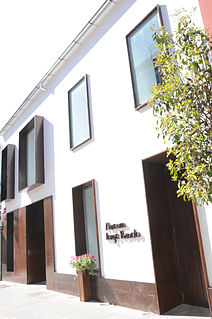
The Museum Jorge Rando is the first expressionist museum in Málaga, Andalusia, Spain. Dedicated to the painter Jorge Rando, it collects his works and it temporally hosts the works of other national and international artists belonging to this movement. It was officially inaugurated on May 28, 2015.

Asturias—Oviedo until 1986—is one of the 59 constituencies represented in the Senate, the upper chamber of the Spanish parliament, the Cortes Generales. The constituency elects four senators. Its boundaries correspond to those of the Spanish province of Asturias. The electoral system uses an open list partial block voting, with electors voting for individual candidates instead of parties. Electors can vote for up to three candidates.
Bailando 2019 is the fourteenth season of Bailando por un Sueño. It began airing on April 30, 2019, on the El Trece network.
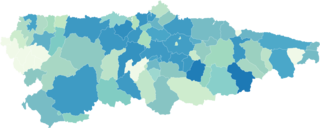
The COVID-19 pandemic in Asturias is part of the Spanish outbreak of the ongoing worldwide COVID-19 pandemic.

Alonso of Spain was an infante of Spain, who died in childhood.
